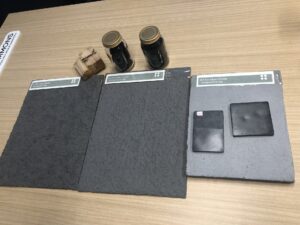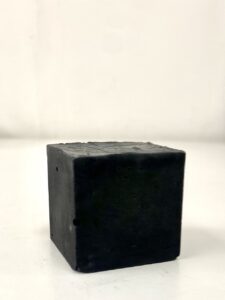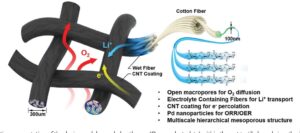Biochar, a carbon-rich material derived from sustainable lignocellulosic biomass, is emerging as a versatile and eco-friendly solution in the world of electronics. This post explores the environmental benefits and technical advantages that are propelling biochar’s innovative applications in power storage and beyond.

🌏 Environmental Benefits of Lignocellulosic Biochar
1️⃣Carbon Sequestration: Biochar is a stable, carbon-rich solid that sequesters carbon when applied to soil, effectively removing CO2 from the atmosphere. This prevents carbon release if the biomass is decomposed or burned. Utilizing lignocellulosic biomass for biochar production contributes to greenhouse gas emissions reduction, enhancing its climate change mitigation appeal.
2️⃣Sustainable Resource: Lignocellulosic Biomass, such as plant dry matter and agricultural/forestry residues, is an abundant and renewable resource. Using this biomass, often considered waste, for biochar production promotes waste reduction and provides an environmentally friendly utilization of these materials.
3️⃣Abundant Availability: Lignocellulosic Biomass is widely available in agricultural, forestry, and industrial industries, where it is often considered as waste or byproducts. Harnessing this abundant resource for biochar production helps manage waste and reduces disposal needs.
👍🏻 Advantages of Biochar in Power Storage or Electronics

1️⃣High Surface Area: Lignocellulosic Biomass’ unique porous structure provides a large surface area, which is crucial for storing charge in batteries and supercapacitors.
2️⃣Carbon-Rich Composition: The high carbon content of Lignocellulosic Biomass, particularly from lignin, makes it an ideal material for carbon-based electrodes in batteries and supercapacitors.
3️⃣Cost-Effective Production: Using agricultural and industrial waste to create Lignocellulosic Biomass can be more cost-effective than other carbon sources, potentially reducing manufacturing costs for power storage devices.
❓ Limitations of Biochar in Power Storage or Electronics

1️⃣Inconsistent Properties: Lignocellulosic Biomass characteristics can vary widely depending on the feedstock and production conditions, affecting performance reliability.
2️⃣Durability Concerns: The long-term stability and durability of biochar in high-demand electronics applications need further investigation. Variations in biochar quality could impact the lifecycle and efficiency of devices that incorporate it.
3️⃣Scaling Challenges: Ramping up Lignocellulosic Biomass production for widespread industrial use faces technological and logistical hurdles to maintain quality at scale.
While the current technical and economic limitations of lignocellulosic biochar production may hinder widespread adoption, continued research and development in the industry can help overcome these challenges. Innovations in biomass processing, biochar production technologies, and market development can unlock the full environmental potential of this sustainable carbon-negative solution.
FAQs
Q: What types of biomass are suitable for producing lignocellulosic biochar?
A: Lignocellulosic biomass includes a wide range of materials, such as agricultural residues (e.g., wheat straw, corn stover), forestry byproducts (e.g., sawdust, wood chips), and even municipal solid waste.
Q: Can biochar be used in other applications beyond power storage?
A: Absolutely! Biochar has shown promising applications in areas like soil amendment, water filtration, and even as a filler material in construction and manufacturing.
Q: How does the production of lignocellulosic biochar compare to traditional charcoal in terms of environmental impact?
A: The production of lignocellulosic biochar is generally considered more environmentally friendly than traditional charcoal production. Biochar sequesters carbon, whereas charcoal production releases greenhouse gases into the atmosphere.
Q: Are there any potential health or safety concerns associated with the use of biochar in electronics or power storage devices?
A: While biochar is generally considered safe, its potential health and safety implications in specific applications need to be thoroughly evaluated. Proper handling and manufacturing protocols should be followed to mitigate any risks.
Q: What are the future prospects for the commercialization and widespread adoption of lignocellulosic biochar in the electronics industry?
A: The future prospects for lignocellulosic biochar in the electronics industry are promising, but its widespread adoption will depend on overcoming technical challenges, ensuring consistent quality, and achieving cost-competitiveness with traditional materials. Continued research, investment, and industry collaboration will be crucial in realizing its full potential.







